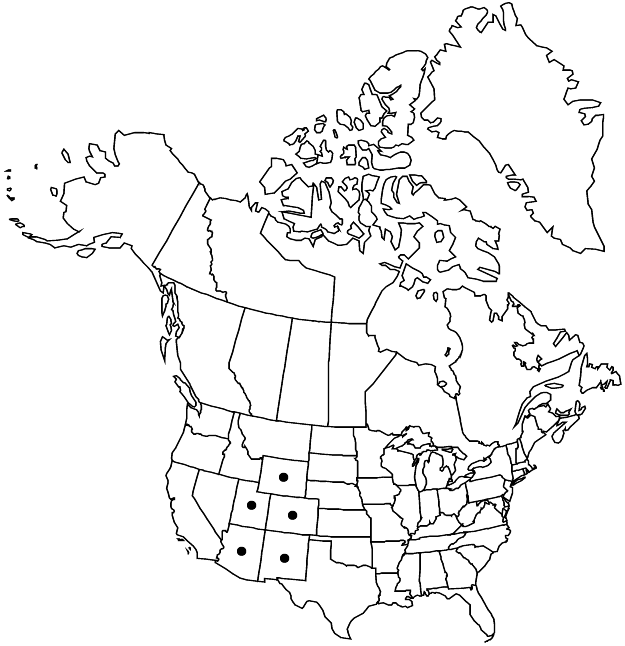Eriogonum arcuatum var. arcuatum
Plants spreading, compact mats, (1–) 2–3 (–6) dm wide. Aerial flowering-stems (0.3–) 0.5–2 dm. Leaf-blades oblanceolate to elliptic, (0.5–) 1–3 × 0.5–1.5 cm. Inflorescences umbellate or compound-umbellate, branched 1–3 times, rarely capitate; bracts (0.3–) 0.5–2 × (0.3–) 0.4–1 cm. Involucres 3–7 × (3–) 4–8 mm. Flowers (4–) 5–8 mm.
Phenology: Flowering Jun–Oct.
Habitat: Sandy, clayey, gravelly, or rocky flats, slopes and outcrops, ledges and cliffs, mixed grassland, saltbush, creosote bush, blackbrush, and sagebrush communities, pinyon, juniper, or conifer woodlands
Elevation: 1000-3000 m
Distribution

Ariz., Colo., N.Mex., Utah, Wyo.
Discussion
Variety arcuatum is widely distributed and occasionally common from southeastern Wyoming south in central and western Colorado, eastern Utah, northern Arizona, and northwest New Mexico. Some specimens of var. arcuatum gathered in southeastern Wyoming can be difficult to distinguish from Eriogonum flavum. Plants with capitate inflorescences, sometimes recognized as var. higginsii, occur throughout the range of the variety. If such distinction is to be made, the earliest available epithet is tectum.
Selected References
None.
Lower Taxa
"dm" is not declared as a valid unit of measurement for this property."dm" is not declared as a valid unit of measurement for this property."dm" is not declared as a valid unit of measurement for this property."dm" is not declared as a valid unit of measurement for this property."dm" is not declared as a valid unit of measurement for this property.